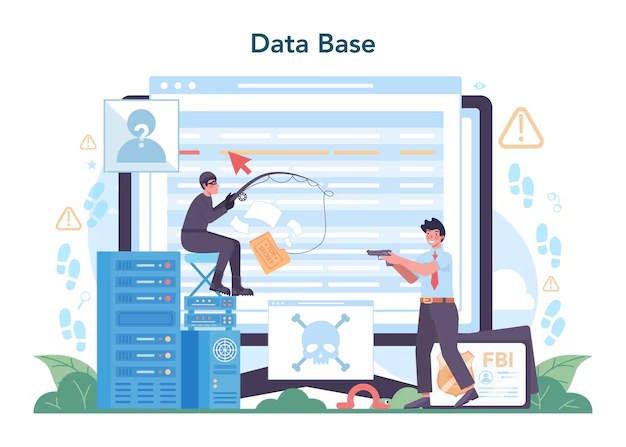In today’s dynamic ecosystem, various factors contribute to the financial landscape organizations navigate. Shifts in workforce expenses have garnered significant attention among stakeholders, as these fluctuations can redefine operational strategies, profit margins, and overall viability within the competitive marketplace.
As expenses associated with human resources continue to evolve, firms face crucial decisions that can affect their sustainability. Adjustments to compensation structures, benefits, and hiring practices necessitate thorough analysis in order to maintain a balance between attracting top talent and ensuring profitability.
Examining trends in expenditure related to personnel provides valuable insights into long-term strategies. In an environment where every cent counts, organizations are compelled to innovate and adapt, discovering new pathways to thrive amidst financial pressures.
The Current Landscape of Labor Costs
A significant shift is occurring in the workforce compensation arena, provoking a wave of adjustments across various sectors. Factors contributing to this phenomenon include inflationary trends, changing employee expectations, and regional variations in pay structures. Such dynamics compel organizations to reassess their financial strategies and operational frameworks.
Recent developments indicate a substantial uptick in wages, driven by heightened demand for skilled personnel and a shortage of qualified candidates. Companies are now faced with the challenge of attracting and retaining talent amid this evolving economic backdrop. In response, many are implementing innovative approaches, from enhancing benefits packages to adopting flexible work arrangements.
Furthermore, regional disparities play a crucial role in determining compensation levels. Urban areas often witness accelerated wage increases compared to rural counterparts, influenced by living expenses and competition for workers. This variation necessitates a tailored approach for organizations aiming to succeed in diverse environments.
Overall, navigating this new terrain requires strategic foresight and adaptability. As entities strive to maintain profitability and competitiveness, they must remain vigilant to fluctuations in workforce expenses and the implications for long-term growth and sustainability.
Factors Contributing to Increasing Wages
Wage growth can be influenced by a multitude of elements that shape the economic landscape. As various conditions evolve, the demand for higher remuneration becomes more pronounced, affecting numerous sectors in society.
- Inflation Rates: Rising costs of goods and services often lead workers to seek salary adjustments to maintain their purchasing power.
- Labor Market Dynamics: A tight job market with low unemployment rates usually increases competition among employers, driving up salaries to attract and retain talent.
- Minimum Wage Legislation: Changes in legal minimum wage levels can compel businesses to raise pay for all employees to maintain compliance.
- Skill Shortages: Industries that experience a lack of qualified professionals often respond by offering higher wages to entice skilled workers.
These elements, among others, collectively shape wage structures across various sectors, underscoring the importance of adapting to shifting economic conditions.
Effects on Small Versus Large Enterprises
Differences in scale often result in varying consequences when facing increased workforce expenses. While both small and large organizations strive to maintain profitability, their capacities to absorb financial shifts differ significantly. It is essential to explore how these changes uniquely affect these two types of entities.
Challenges for Small Enterprises
Smaller organizations frequently experience heightened pressure due to elevated employee expenses. Key challenges include:
- Limited financial reserves that restrict adaptive measures.
- Dependency on fewer clients, making revenue streams less stable.
- Difficulty in attracting and retaining talent due to budget constraints.
These factors can result in strategic reconsideration, often leading to:
- Reduced hiring opportunities, impacting growth potential.
- Price increases for products or services to offset expenses.
- Possible downsizing or reallocation of resources.
Large Enterprises’ Adaptation Strategies
In contrast, larger firms typically command more resources and have greater flexibility. Their strategies may involve:
- Implementing automation to counterbalance workforce expenses.
- Diversifying product lines or market segments to mitigate risks.
- Negotiating better terms with suppliers and vendors to optimize costs.
However, these larger entities are not immune to challenges. Potential issues include:
- Increased scrutiny from stakeholders regarding profit margins.
- Possible backlash from employees if cuts affect job security.
- Need for continuous investment in technology and employee satisfaction to maintain competitiveness.
Strategies for Adapting to Rising Costs
Adjusting to increased expenses requires proactive thinking and innovative approaches. By implementing effective strategies, entities can navigate financial challenges while maintaining operational efficiency. Below are several key methods that can be employed to mitigate the effects of growing expenditures in the workforce.
1. Streamlining Operations
Optimizing processes can lead to significant cost reductions. Consider the following actions:
- Evaluate current workflows for redundancy.
- Invest in technology that automates repetitive tasks.
- Encourage cross-training to enhance workforce flexibility.
2. Reevaluating Compensation Structures
Adjusting remuneration models can promote sustainability without compromising employee satisfaction. Options include:
- Introduce performance-based bonuses to align employee goals with organizational objectives.
- Consider flexible work arrangements that can enhance job satisfaction and retention.
- Offer non-monetary benefits such as professional development opportunities.
Impact on Pricing and Profit Margins
As expenses associated with workforce increase, organizations face critical decisions regarding their pricing strategies and overall financial health. Business leaders must navigate the delicate balance between maintaining competitiveness and ensuring sustainable profitability. Adjustments in operational costs directly influence the financial framework within which these entities operate.
Price Adjustments and Consumer Response
To offset growing expenditures, many firms may find it necessary to implement price hikes. This strategy, however, risks alienating price-sensitive consumers. Firms need to balance their intent to preserve margins while also being mindful of market conditions and customer perception. Transparent communication about reasons behind price shifts can help mitigate backlash and maintain customer loyalty.
Long-term Profitability and Strategic Planning
Increased price points can lead to short-term margin enhancement; however, they may also drive customers to seek alternatives. Consequently, businesses must engage in strategic planning that considers potential market fluctuations and consumer behavior. Emphasizing innovation, operational efficiency, and value enhancement becomes crucial to navigating challenges posed by the changing economic landscape, ultimately fostering long-term viability and success.
Future Trends in Workforce Economics
As organizations navigate a constantly evolving landscape, various elements are influencing employment structures and practices. Anticipating emerging patterns can provide insights into how companies might adapt, innovate, and thrive amidst challenges.
Technological Advancements
Technological innovations are transforming traditional work environments. Automation, artificial intelligence, and remote collaboration tools are increasingly prevalent, leading to significant shifts in workforce dynamics. Key developments include:
- Increased automation of manual tasks, resulting in upskilling and reskilling opportunities.
- Remote and hybrid work models gaining popularity, reshaping recruitment practices.
- Data analytics driving decision-making processes related to workforce management.
Shifting Employee Expectations
Contemporary employees prioritize work-life balance and meaningful engagement in their roles. As a response, organizations are re-evaluating their approaches to talent acquisition and retention. Notable trends involve:
- Emphasis on mental health and well-being programs.
- Flexible working hours and locations becoming standard offerings.
- Focus on diversity, equity, and inclusion initiatives to foster a supportive environment.
By recognizing and adapting to these trends, organizations can position themselves favorably in an ever-changing economic climate, ensuring sustained growth and competitiveness.
Questions and answers: Cost labor just got higher
How can businesses reduce labor costs in 2024 while maintaining employee productivity?
To reduce labor costs in 2024 while maintaining employee productivity, businesses can implement strategies like using scheduling software to better manage employee hours and avoid unnecessary overtime. Reducing overtime hours can lower payroll expenses without affecting the quality of work. Additionally, investing in employee training can improve worker productivity, ensuring that fewer workers are needed to complete the same amount of work. By focusing on indirect labor costs, such as benefits and payroll taxes, businesses can also find ways to reduce expenses while maintaining a motivated workforce.
What factors contributed to the increase in labor costs in 2023, and how did businesses manage rising labor expenses?
The increase in labor costs in 2023 was driven by rising wages, inflation, and labor shortages following the pandemic. According to the Bureau of Labor Statistics, higher labor costs represented a significant challenge for many businesses, especially in industries facing tight labor markets. To manage these rising labor expenses, businesses often had to adjust by raising prices for their goods and services or reducing the number of employees to maintain profitability. Some companies also focused on increasing productivity per employee to offset the impact of higher labor costs.
How do overtime hours and hourly wage increases impact a business’s total labor cost?
Overtime hours and hourly wage increases directly contribute to a business’s total labor cost by increasing the payroll burden. When employees work beyond 40 hours a week, they are typically eligible for overtime pay, which is calculated at 1.5 times their hourly wage. This can cause labor expenses to rise significantly, especially if businesses rely heavily on overtime. As wages and overtime pay increase, so do payroll taxes and other indirect labor costs, making it more expensive for businesses to manage their workforce.
What measures can businesses take to offset higher labor costs and maintain profitability in 2024?
To offset higher labor costs in 2024, businesses can adopt several measures such as improving worker productivity, automating repetitive tasks, and streamlining operations to reduce the number of hours worked. Implementing scheduling software can help optimize staff work hours and avoid unnecessary overtime. Additionally, businesses can explore ways to reduce turnover and labor-related indirect costs, such as unemployment insurance and employee benefits. By increasing efficiency and controlling labor expenses, businesses can maintain profitability despite rising labor costs and changes in labor market dynamics.
How did labor costs increase in the U.S. during the first quarter of 2022, and what were the main contributing factors?
During the first quarter of 2022, labor costs increased due to wage gains and inflationary pressures in the U.S. According to the Employment Cost Index, rising salaries and wages, combined with growing costs associated with benefits, drove up unit labor costs. Increases in labor expenses were particularly evident in the service sector, where businesses had to adjust to higher prices and inflation could push operational costs even further. These higher costs affect both direct labor costs, like wages, and indirect costs, such as benefits and insurance.
How do direct labor costs impact business expenses and overall profitability?
Direct labor costs, including salaries and wages, significantly impact business expenses and profitability. When labor costs increase, businesses see a rise in their total operational expenses, which affects profit margins. Direct labor costs are one of the primary components in calculating overall labor costs, and if not managed carefully, they can lead to higher prices for goods and services. Companies must calculate labor costs accurately to ensure they maintain a balance between paying competitive wages and controlling expenses.
What role does the price index play in reflecting higher labor costs and its broader impact on the economy?
The price index measures inflation and tracks changes in the cost of goods and services, reflecting how higher labor costs affect overall prices in the economy. As labor costs increase, especially in the U.S. labor market, businesses often pass those costs onto consumers in the form of higher prices. These price increases can contribute to core inflation, making the cost of living rise. Policymakers monitor the price index and labor cost growth to adjust economic policies that aim to control inflation without reducing wage gains for workers.
How can businesses lower labor costs while managing wage increases and maintaining worker productivity?
To lower labor costs while managing wage increases, businesses can adopt strategies like improving operational efficiency, reducing unnecessary overtime, and automating certain tasks. Measures of labor efficiency, such as productivity per worker, help businesses ensure that they get the most out of their workforce even if wages rise. By managing the types of labor costs that include both direct wages and indirect benefits, companies can better control business expenses without cutting hours or reducing staff, maintaining a healthy balance between wage gains and profitability.

